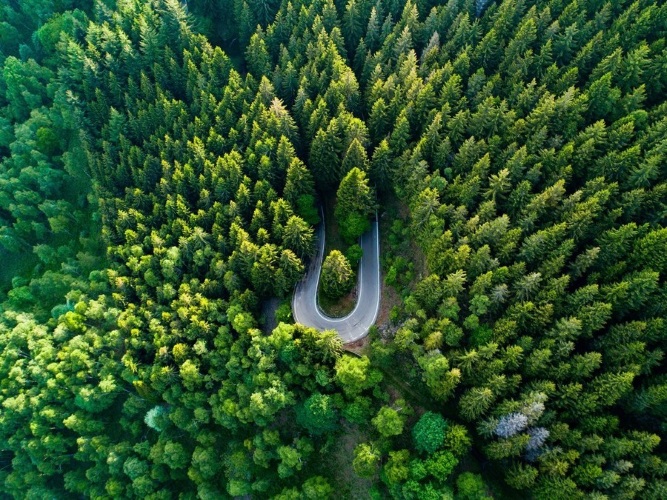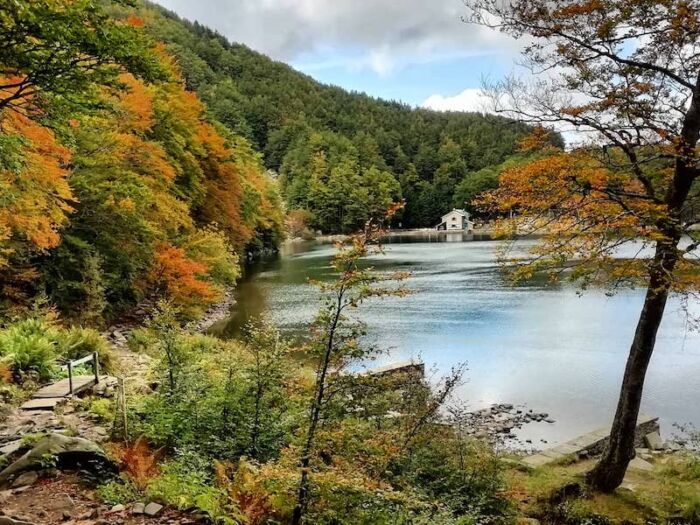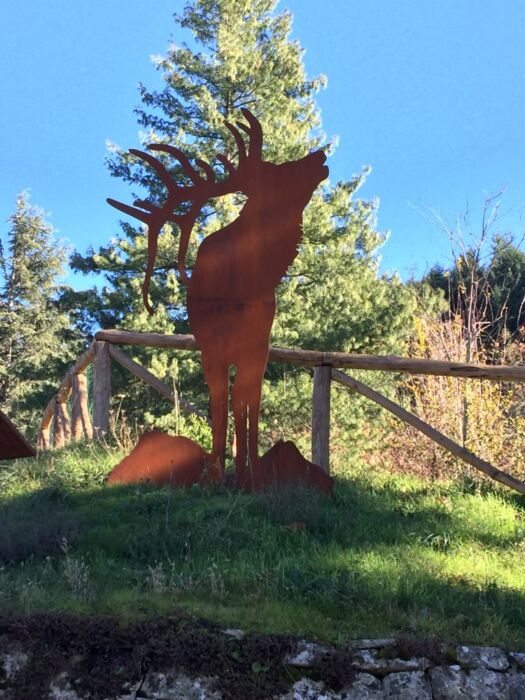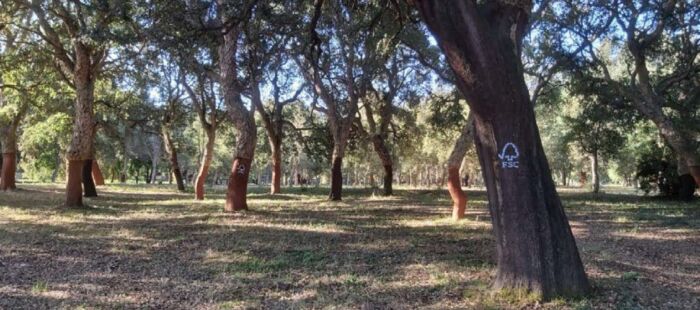
With 11 million hectares of woodland, Italy ranks second in Europe in terms of forest coverage and offers extraordinary possibilities for a holiday or a ‘slow’ experience, where the environment and well-being, history and culture, civic customs and ancient legends come together. Even better if the choice favours the discovery of locations where local communities have developed a strong attachment to the forest resource over the centuries, refining systems of management and sustainable use that have allowed cultivation, grazing and biodiversity to coexist.
Not only that: in recent years and thanks to the effects of climate change, the life-supporting services that forests constantly offer have been rediscovered: these include the capture and storage of CO2, the preservation of water resources, biodiversity and soil richness, as well as the hosting of tourist-recreational and cultural activities.
Here, then, are four tourism opportunities in FSC-certified areas in Italy, located in as many regions: here, the decision has been made to focus decisively not only on responsible management but also on enhancing the natural services associated with trees and forests that can become interesting stops on a summer itinerary to discover the Belpaese.
The Zegna Oasis (Biella, Piedmont)
Located in the Alps about half an hour’s drive from the centre of Biella, the Oasi Zegna was born from the idea of the entrepreneur Ermenegildo Zegna to give back to the community an area of 100 square kilometres that, thanks to reforestation and safety measures, today hosts 700 hectares of beech woods, 300 of fir woods and 400 of mixed woods, completely open to the public.
Here there are more than twenty nature trails for lovers of trekking or Nordic walking, cycling, horse riding and skiing in the colder months, but it is also possible to take yoga, meditation and qi gong courses and seminars, or participate in meditation and mindfulness courses while walking in the Oasis woods.
Of course, there is no lack of attention to biodiversity conservation, which includes an important project to monitor the Carabus Olympiae populations, an endemic beetle that risked extinction due to anthropic pressure and has now returned to occupy these areas thanks to improved forest and pastoral management.
FSC-certified since 2022, today the Oasis has added verification of all five forest ecosystem services: CO2 stock; conservation of water sources, biodiversity and soil; and improved tourism-recreational and cultural services.
The Tuscan-Emilian Apennines National Park
Trekking, climbing, cycling, sky running and horseback riding: in the 26,149 hectares of the Tuscan-Emilian Apennines National Park there is truly room for all experiences. Established in 2001, it falls under the Man and the Biosphere-MAB, an intergovernmental scientific programme initiated by Unesco to promote the protection of biodiversity and good practices of sustainable development.
It boasts an extraordinary wealth of habitats inhabited by species such as the wolf, mouflon, roe deer, deer, buzzard, peregrine falcon, golden eagle, alpine newt and endemisms such as fescue, vetch, genoese palèo and Apennine primrose.
The varied landscapes included in this area offer visitors the opportunity to walk in search of ancient pastures (Giunchiglie di Logarghena), chestnut groves, fir and beech forests, in which it is also possible to glimpse a few centuries-old plants and an ancient hydraulic sawmill, now a refuge for hikers (Abetina Reale). It is currently the only Italian national park to be certified according to FSC standards, a goal achieved in 2022, followed by the verification of all five ecosystem services. The CO2 currently stored in this area is 1,755,845.02 tonnes.

The Rincine Regional Forest Complex (Florence, Tuscany)
Situated in the province of Florence, with its 1,448 hectares, the Rincine Regional Forest Complex is part of the area managed by the Unione dei Comuni Valdarno e Valdisieve and involves the municipalities of Londa, S. Godenzo and Dicomano.
The areas are mainly populated by beech and turkey oak, but it is also possible to find conifers, douglas fir plantations, black pine afforestation and chestnut groves. In addition to the trekking, biking and horse-riding trails, it is possible to discover the beauty of this area through a series of specific routes: the silvicultural path, for example, which allows you to learn the management techniques of the Apennine forest; two specific family routes, which are easy to access and also designed for the needs of the youngest; “le buone erbe” (the good herbs), a walk through broad-leaved and coniferous forests, meadows, pastures and heaths to discover the plants that have always been used by human beings for the most varied uses.
The Rincine forests are included, the only ones in Italy, in the Model Forests network, an international network that promotes innovative and sustainable forms of forest governance. They have also been FSC-certified since 2013, and like 13 other forestry realities in our country, they have carried out the verification of management impacts on natural services with regard to the improvement and maintenance of the carbon stock and tourist-recreational activities.

The Experimental Cusseddu-Miali-Parapinta Cork Grove (Tempio Pausania, Sardinia)
In the historic Sardinian cork district in the province of Sassari (Municipality of Tempio Pausania), it is possible to discover this forest, which covers about 67 hectares and, according to the latest inventory data (2021), has more than 30 thousand cork, downy oak, holm oak and ash trees.
It is managed by Agris Sardegna’s Cork and Forestry Research Service and is both a production area capable of supplying 1,600 quintals of cork every ten years, and a place where the plants’ resistance to pathogens and their recovery capabilities are tested, as well as the artificial regeneration of the forest – hence the term ‘experimental’.
But it is also a place that is home to a parcel known as the ‘Natural Forest’: left to its own devices since the 1960s, it allows us to test the dynamics of a forest that has not been affected by human activities for a long time.

Lastly, it is home to an infinity of local species; these include 400 species of plants, 14 species of orchids, 218 species of mushrooms, as well as 42 species of birds and mammals such as wild boar, hedgehogs, foxes, weasels, martens and hares.
Since 2005, the Sughereta Sperimentale has been certified according to FSC forest management standards, to which the verification of the conservation and enhancement of ecosystem services was added in 2021: starting with the carbon stock, equivalent to 8,881.78 tonnes of carbon dioxide absorbed, and the protection of biodiversity. Management activities have allowed for the restoration and maintenance of springs, wells and stream channels, as well as the consolidation of banks with essences adapted to wetland environments. In order to conserve the soil, the renaturalisation of old reforestations and the creation of new ones for naturalistic purposes was carried out, along with a series of investigations that made it possible to analyse the physical and chemical characteristics of the soil and to prepare measures for its protection and improvement.



































